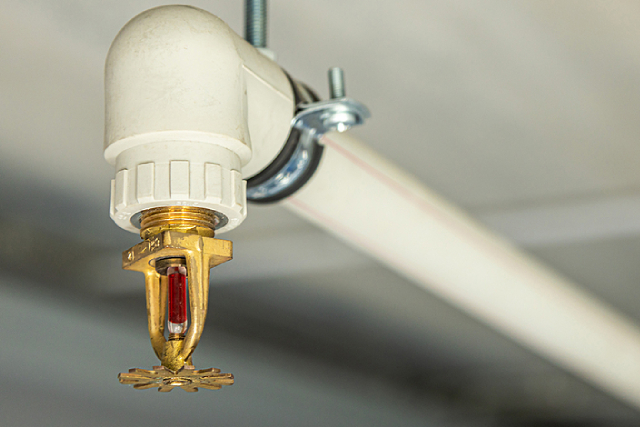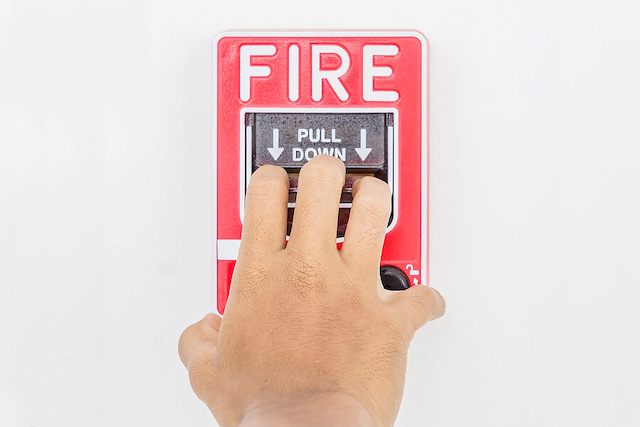Corrosion is a common and inevitable issue affecting all fire sprinkler systems. Even with rigorous cleaning and maintenance, most piping systems will still contain traces of it. Even so, some corrosion is generally acceptable and fairly safe — provided it is kept to a minimum. Otherwise, if the amount of corrosion is left unchecked, it could lead to obstructions and costly leaks as well as compromise the system's functioning, a safety risk that cannot be overlooked. Thankfully, several preventative measures can keep corrosion at bay. Below, we shall first touch on the common causes and ways to prevent them.
What Causes Corrosion in Sprinkler Systems?
Corrosion is when a material (such as metal) deteriorates because of a chemical reaction. With fire sprinkler systems primarily consisting of metal and containing water and oxygen, it creates a conducive environment for corrosion to develop.
Corrosion typically forms in three types, namely:
- Galvanic corrosion occurs when two or more unlike metals under water come into electrical contact.
- Iron oxide corrosion or simply rust.
- Microbiologically influenced corrosion arises from microorganisms (like fungi and bacteria) in biofilms on the corroding material.
What Are The Risks of Too Much Corrosion?
For most facilities, corrosion in fire sprinkler systems is never a matter of if but when. And once corrosion levels become too high, the following problems could develop:
1. Obstructions
Any obstructions in the system may limit the flow of water or any other fire-extinguishing fluids or rupture it altogether.
2. System shutdown
A temporary shutdown of the fire sprinkler system may halt production or business operations, affecting profits.
3. Total system failure
Given how fire sprinkler systems are a critical defence against fires, their non-functioning can cause harm to property, people, and products in case a fire breaks out.
4. Complete system replacement
Fully replacing the system will likely cost double or triple the initial installation.
4 Preventative Measures Against Fire Sprinkler System Corrosion
Although keeping corrosion at a safe level may seem difficult, it becomes more manageable with the right resources and information. Here are some key tips on maintaining and implementing a low-corrosion fire sprinkler system for any facility.
1. Choose pipe materials that feature corrosion-resistance
As mentioned above, environments consisting of metal, water, and oxygen tend to be where corrosion quickly occurs. Hence, the quickest and simplest way to reduce corrosion levels is to remove metal from the equation, which means choosing another material for the pipes. Some materials like cross-linked polyethylene and chlorinated polyvinyl chloride offer greater resistance to corrosion than metal. Do note that while corrosion is more prevalent in metals, it is not limited to them. Corrosion can still occur in other pipe materials, but it is much less likely.
2. Replace compressed air systems and upgrade to a nitrogen generator
Another effective solution that amends the metal, water, and oxygen equation is by removing oxygen and replacing it with a similar but corrosion-resistant gas like nitrogen.
Nitrogen is an inert and stable gas that does not react with metals, so replacing a compressed air system with a nitrogen generator is highly recommended to significantly reduce the risk of heavy corrosion. Moreover, doing so also comes with a few key benefits, such as:
- Fewer repairs
- Lower operating costs, and
- Extended life expectancy of the fire sprinkler system
3. Conduct periodic inspection, testing, and maintenance
Maintaining fire extinguishing systems, including fire sprinklers, is already a standard in any facility. According to regulations, inspection, testing, and maintenance of fire sprinkler systems (including its fire pump systems) should be performed monthly, while regulatory testing must be conducted annually. Sprinkler pumps get tested for the monthly tests by activating the drain test valves. Meanwhile, annual testing involves the sprinkler system and related equipment undergoing waterproofing tests and or activation tests.
4. Keep an eye out for potential corrosion indicators
Besides regular maintenance, it is also necessary to constantly be on the lookout for potential indicators that something is amiss with the fire sprinkler system. If you observe any of the following during use, tests, or maintenance procedures, it is best to look into your system further to ensure there is no bigger problem afoot:
- Pinhole leaks
- Plugged sprinklers
- Defective fire pump intake
- Foreign material discharges
- Foreign material in dry pipe valves, check valves, or fire pumps
- An increase in the amount of time necessary for the water to flow to the test connection when conducting a full-flow trip tests in comparison to original system acceptance tests (Note: for dry systems only)
Conclusion
Corrosion is a common issue that naturally occurs in all fire sprinkler systems. To ensure corrosion does not affect the system's performance, fire safety managers must take preventive measures that restrict its growth and spread. This all starts with conducting periodic inspections and maintenance as well as removing the root causes.
Interested to learn more about how to properly maintain fire extinguishing systems? The fire safety courses hosted on TenLearn are what you need. With the help of our courses on fire safety management in Singapore, FSMs can quickly improve their skills and knowledge while gaining FSM CPD points simultaneously.
Browse our catalogue for a fire safety course in Singapore today and start learning anytime, anywhere!


Write a public review